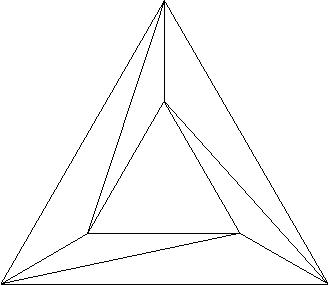Let $P$ be a convex polygon in the plane $R^2=R^2\times \{0\}$, and $E$ be the edge graph of some subdivision of $P$ into convex polygons, which is $3$-connected. Does there exist a convex polyhedral cap $C\subset R^3$ such that the boundary of $C$ coincides with that of $P$, and the orthogonal projection of the edges of $C$ into $R^2$ coincide with $E$?
A convex polyhedral cap is a portion of the surface of a convex polyhedron cut off by a plane which contains an interior point of the polyhedron.
Addendum : The answer to this question is also discussed in a reply by Andy B. to an earlier question.

